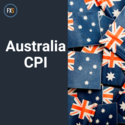The USD/CAD is testing the 1.09 levels this morning ahead of the Bank of Canada rate statement. Governor Stephen Poloz is not expected to issue a rate change, but an improvement on the economy’s assessment would be a good sign given the rise in exports. Commodities continue to weigh on the economy. The US recovery is boosting some sectors while Chinese and European slowdowns are affecting manufacturing worldwide. Agricultural oversupply has reduced prices as inflation continues to be a non-issue in the developed world.
Canadian Gross domestic product accelerated to an annual growth rate of 3.1% in Q2 beating economist and Central Bank forecasts. The figure was a big improvement over the 0.9% advance seen in the first quarter. The colder than usual winter was blamed for the underperformance of both the US and Canadian economies. Household spending has also risen, but exports became the main driver of economic expansion.
Governor Poloz has issued the same warning that his predecessor Carney pronounced against the increasing household debt. Consumers continue to increase their ratio of household debt at the expense of their saving by buying real estate. House prices continue to rise as consumers take advantage of record low interest rates and are leveraging up their purchases.
Central bank monetary policy and geopolitical events continue to dictate the pace of the market. This week could be dubbed Central Bank week as only the Federal Reserve in the US is actively missing. The Reserve Bank of Australia, the Bank of Canada, the Bank of England, The Bank of Japan and the Riskbank will be addressing the markets. There are little changes expected on the monetary policy front but there is still room from a couple of verbal curve balls for which BoE Governor Carney is becoming known for.
Central banks around the globe have dominated the market in their efforts to bring the global economy out of the 2008 credit crisis. It is debatable how good a job they have done collectively, or if it was better than the other alternatives. The US is about to end its exercise in quantitative easing in the fall. QE has pushed interest rates to all time lows and the Fed’s hint of a rate hike 6 months after the end of bond-buying could boost metals as they are inflation hedges. On the other side the European Central Bank and the Bank of Japan are being pressured to increase their QE initiatives to get their respective economies back on a growth track.
The major economic indicator that both Europe and Japan are focusing on is inflation. In a low inflation world metals suffered as there was low demand from final consumers and also from investors wishing to use commodities as a hedge against inflation. Prices in the US are bound to rise after the central bank starts hiking rates and the economy grows stronger. The ECB and BOJ continue their battle against inflation. Japan has taught economists lessons on what happens when deflation is left unchecked. Europe and current Japanese leadership want to avoid that scenario.
On the geopolitical risk front the Russia-Ukraine tensions continue to rise as Europe is expected to scale their sanctions against Moscow in a harsher stance. The incursion by Russian soldiers into Ukrainian territory has taken the European leaders by surprise given the statements by Putin regarding Russian intentions.
he market first focused on natural gas as Europe was focused on the pipelines that transport energy from Russia via the Ukraine. Now with a prolonged tension that has escalated the price of the metal continues to rise. The recent drop in price is seen as the result of a take profit move after the 13-year high was reached.
Recommended Content
Editors’ Picks
AUD/USD rises to two-day high ahead of Aussie CPI

The Aussie Dollar recorded back-to-back positive days against the US Dollar and climbed more than 0.59% on Tuesday, as the US April S&P PMIs were weaker than expected. That spurred speculations that the Federal Reserve could put rate cuts back on the table. The AUD/USD trades at 0.6488 as Wednesday’s Asian session begins.
EUR/USD now refocuses on the 200-day SMA

EUR/USD extended its positive momentum and rose above the 1.0700 yardstick, driven by the intense PMI-led retracement in the US Dollar as well as a prevailing risk-friendly environment in the FX universe.
Gold price cautious despite weaker US Dollar and falling US yields

Gold retreats modestly after failing to sustain gains despite fall in US Treasury yields, weaker US Dollar. XAU/USD struggles to capitalize following release of weaker-than-expected S&P Global PMIs, fueling speculation about potential Fed rate cuts.
Ethereum continues hinting at rally following reduced long liquidations

Ethereum has continued showing signs of a potential rally on Tuesday as most coins in the crypto market are also posting gains. This comes amid speculation of a potential decline following FTX ETH sales and normalizing ETH risk reversals.
Australia CPI Preview: Inflation set to remain above target as hopes of early interest-rate cuts fade

An Australian inflation update takes the spotlight this week ahead of critical United States macroeconomic data. The Australian Bureau of Statistics will release two different inflation gauges on Wednesday.
